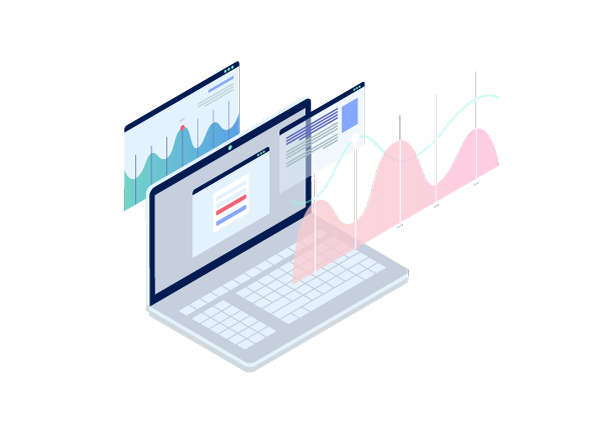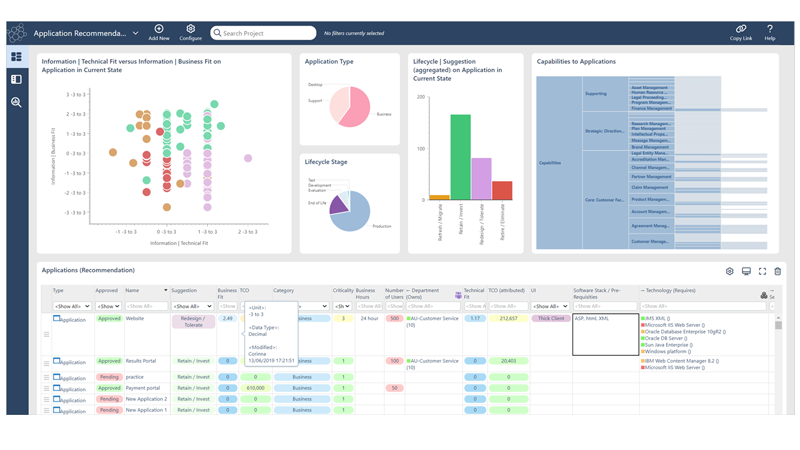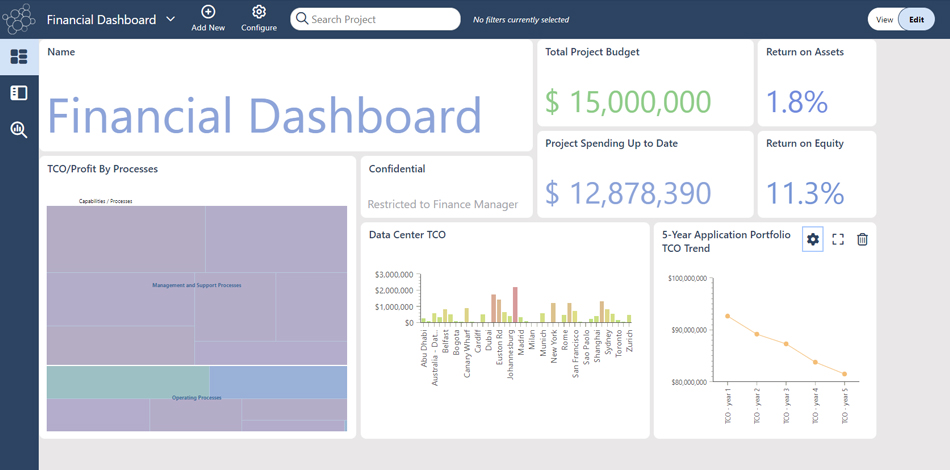
Managing a successful application transformation process
Managing the application life-cycle isn’t just about cost savings. A successful process will focus on improving or developing new applications and business processes.
Architects also need to understand how applications depend on technology and infrastructure, and how they support business capabilities which impact customer and stakeholder satisfaction.
Start by identifying:
- Who needs to be involved?
- How you’ll keep them informed?
- Goals and success metrics.
Who Are Your Stakeholders?
Identify who is Responsible, Accountable, Consulted and Informed for application portfolios.
This can guide the permissions you set up in your dashboards or reports. Common stakeholder groups include:





Centralize Data in an Application Inventory
Good out-of-the box data integrations and an open API can do a lot of the heavy-lifting of data centralization. Top tips for managing data include:
- Roundtripping data with Excel or Google Sheets can be a great way to get started
- Mapping to content in ServiceNow or SharePoint lists can keep details on vendors, versioning, and life-cycles updated. Integrations can be set up so they’re either self-service or automated-delivery, depending on your preference.
- Shadow IT continues to increase. Assume departments are using applications which aren’t on official registers
“Enterprises have up to 1000 cloud apps,
but CIOs think it’s just 30-40”
– Symantec
Collaborating on Application Roadmaps & Portfolios
Connecting data portfolios and application diagrams is key to keeping colleagues informed.
Data-owners need to access their application lists and reports. Managers and architects also need to capture views of information flows, business process and capabilities and technology infrastructure. They need to be able to edit this data easily day-to-day, updating the central repository.

Application Portfolio Management Dashboard with Current State Application Portfolio, Capabilities to Applications, Application Recommendations, Application Lifecycle in ABACUS
Accurate Metrics for Application Portfolio Management
Set up diagnostics to track the health of the application portfolio against your chosen success metrics (cost, reliability, risks). Pre-built algorithms in ABACUS are available to assist with these APM assessments. You can also set up analytics to forecast metrics into the future.
To save time and effort, we recommend setting up analytics so they can be re-calculated automatically, updating throughout your portfolio. Algorithms can be used to calculate standard APM scores and indicators including:

- Cost & TCO
- Business Fit & Technical Fit, including:
- Reliability (Probability of a component failing)
- Complexity (number of connections to technical elements such as servers, platform services, infrastructure services, databases)
- Availability (proportion of time for which it is available, factoring in recovery time)
Cost calculations are particularly important, and can be set up to include both fixed and variable CapEx and OpEx costs. Architects can also use ABACUS aggregate indirect costs such as Server costs. By building up a cost profile of each application, you will then be able to assess the entire portfolio.
Best Application Portfolio Management Visualizations & Roadmaps
Schedule time regularly with Heads of Departments and the CIO to make sure they’re familiar with the application portfolio.
Start your presentations with simple charts showing how application transformation is both saving the business money, and improving metrics such as customer satisfaction. By setting up interactive charts and dashboards, you’ll also be able to drill-down into the repository to answer more detailed questions as you go.

Download our Application Rationalization Checklist & Reporting Templates
Streamline Your Enterprise Architecture and Application Portfolio Management
Contact us today

